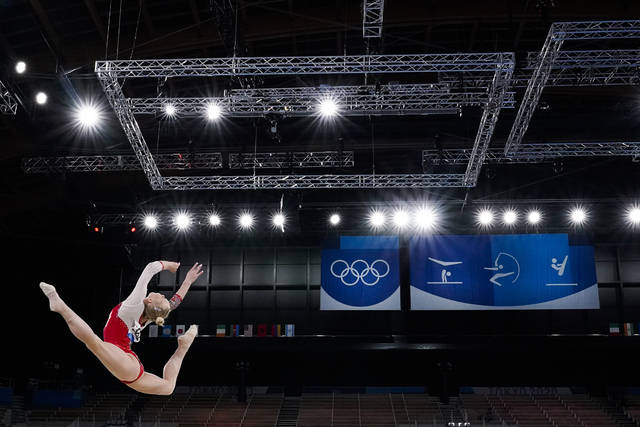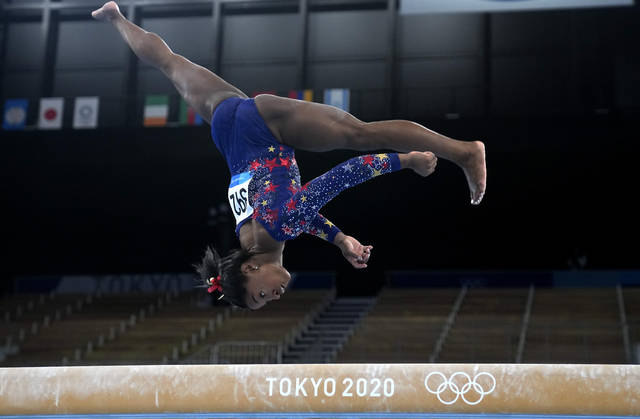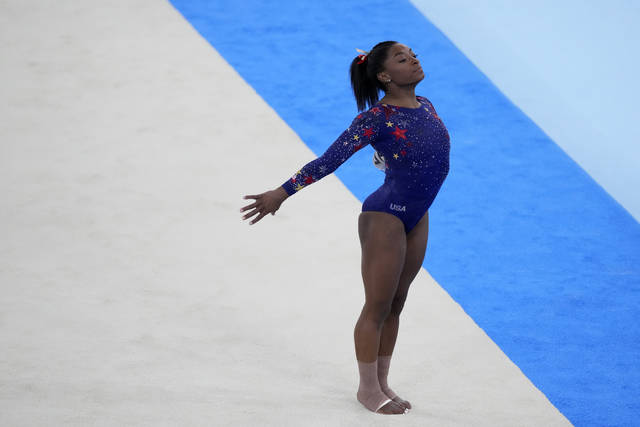How the Russians caught the U.S. in gymnastics
TOKYO — Tom Forster’s words were jarring. Not because they were controversial or insincere, but because they simply hadn’t been uttered by someone in charge of the USA Gymnastics women’s program for a long, long time.
“I want to say congratulations to Russia for the amazing competition they did today, for the transformation they’ve made since 2019,” Forster said after the team representing the Russian Olympic Committee finished ahead of the Americans during Olympic qualifying on Sunday.
The strides made by the USA’s longtime rival were lost amid the immediate shock of having the U.S. team led by reigning Olympic champion Simone Biles looking up at the scoreboard to someone above them for the first time since the 2010 world championships.
Three of the four Americans who went to work at the Ariake Gymnastics Centre on Sunday — Biles, Sunisa Lee and Grace McCallum — were part of the squad that rolled to victory in Stuttgart in October 2019.
There, the U.S. topped qualifying and the finals by more than five points, a massive margin in a sport where mere tenths often can be the difference between the gold and going home empty-handed. The Russians finished a distant second, just like every team trying to catch the Americans over the last decade.
In Japan, the gap has closed considerably. Maybe completely. Competing in the subdivision ahead of the U.S., Angelina Melnikova and her teammates put on a dazzling display of artistry and execution. Their 171.629 total was their highest in a major team competition since the Code of Points was updated in 2017.
It’s not that the Americans were bad. They just weren’t great. The Russians were, which should offer Tuesday night’s team final something it has lacked for a decade: actual drama.
So how did we get here?
> The days of Nadia Comaneci and the perfect 10 are long gone. The International Gymnastics Federation switched to a new system following a judging controversy at the 2004 Olympics in Athens.
Starting in 2006, scores were broken down into two parts. The difficulty (D) score is based on what a gymnast does during their routine. The harder the elements the athlete successfully strings together, the higher the total.
In theory, the D-score can be open-ended. Most elite routines carry a D-score between 5.4 and 6.0. Exceptional routines — such as what Biles does on floor or what Lee does on uneven bars — score 6.5 or higher.
The second score is the execution (E) score. It is based on a 10.0 scale, but the perfectly executed routine does not exist. Not even Biles has managed to hit that plateau during her rise from prodigy to the unquestioned greatest gymnast of all-time.
Any execution score over 8.00 is good. Anything over 8.5 — particularly on bars, beam and floor, where deductions quickly pile up — is extraordinary.
Upshot: a 14.0 is good. A 14.5 is really good. Anything over 15.000, and you’re likely to head home with some serious hardware in your carry-on.
> The scoring system forces coaches and athletes to do their own version of risk vs. reward. Do you pack routines with really hard elements at the risk of execution? Or do you opt for an easier set you could potentially do more cleanly?
For years, the Americans — Biles in particular — haven’t had to choose. Not only have they done the hardest gymnastics out there, they’ve done them better than anyone else.
That’s still the case in Tokyo. The combined difficulty scores the Americans used on all four events during qualifying was 71.9. The ROC’s total was 69.7.
So why did ROC finish ahead of the U.S.? Execution. Where the Americans were messy, the Russians were precise. It made all the difference.
> The Russians were so good Sunday that reigning European champion Viktoria Listunova will watch the all-around finals from the stands after teammates Melnikova and Vladislava Urazova finished ahead of her in qualifying.
For the Americans, Biles put up the top score as usual and will compete in all five finals. But she was not at her unparalleled best. Lee, McCallum and Chiles had significant form breaks at some point.
Yet despite those miscues, the U.S. total of 170.562 still would have been good enough to finish atop the table in both qualifying and the team finals at the 2018 and ‘19 world championships.
> If the Americans simply can match the execution scores of the Russians, they should be fine. Their built-in advantage on difficulty gives them a head start before they even salute the judges.
Remove the ads from your TribLIVE reading experience but still support the journalists who create the content with TribLIVE Ad-Free.



